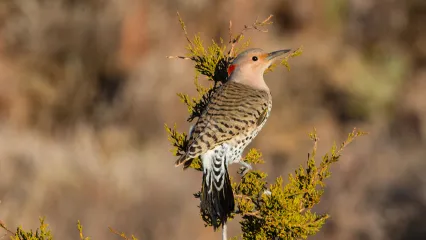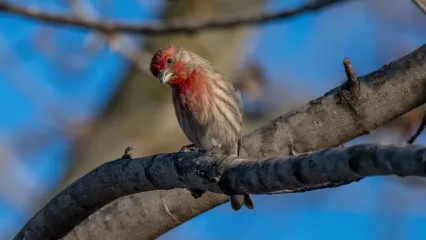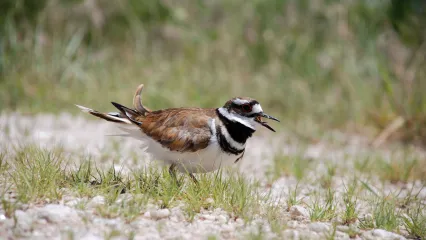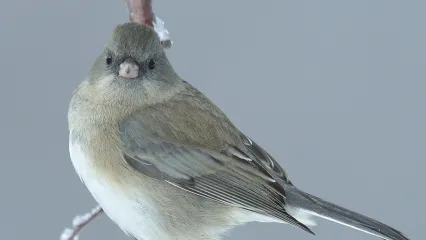
Description
This relatively long-bodied woodpecker is a little larger than a robin. It has a prominent black marking on the breast as well as many small black spots on the breast, belly and sides. The feathers under the wings are distinctively marked with yellow, orange or red which is visible in flight. The back is predominately brown with fine black lines running from side to side. A bold white patch is visible on the rump in flight. Males and females do not look alike; males have a black or red “moustache” on the side of the face. Northern flickers are most often confused with the red-bellied woodpecker, which lacks black spots and markings on its back and wings rather than the brown and black plumage found in the flicker.
Size
11-12 inches long. 16.5-20 inch wingspan.
Habitat
This woodpecker occurs in a wide range of habitats including all woodland and forest types as well as brushy prairies with scattered trees. Flickers are often found in residential neighborhoods during the winter. Two races of the northern flicker occur in Oklahoma during the winter months. The “yellow-shafted” flicker is found statewide but is more common in the eastern 2/3 of the state. The “red-shafted” flicker is much less common and is primarily found in the western half of Oklahoma.
Life Cycle
At bird feeders northern flickers eat suet and miracle meal. Away from feeders they eat insects, seeds, nuts and fruit. This woodpecker frequently feeds along the trunks and branches of trees but is unique among woodpeckers in that it also forages on the ground below trees for insects and nuts. This is one of the few birds that eats ants. During the winter months it consumes fallen acorns. It often forages alone, but may be found in small flocks of three to ten birds.


